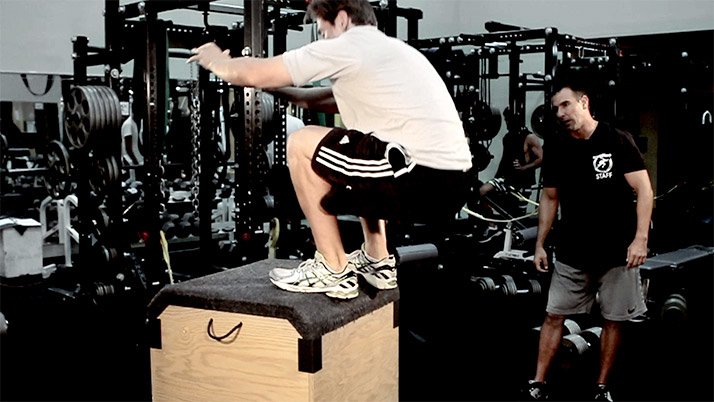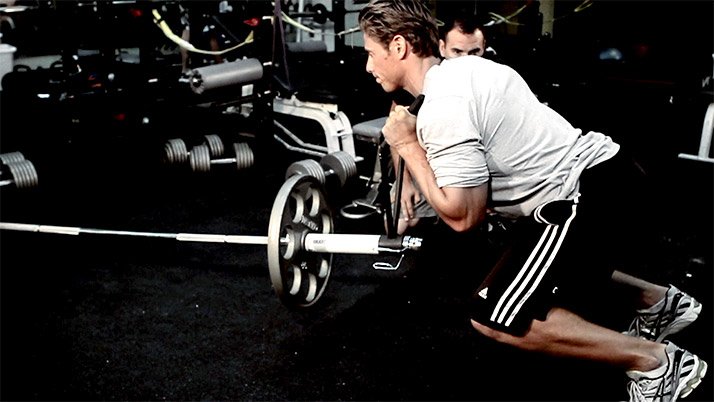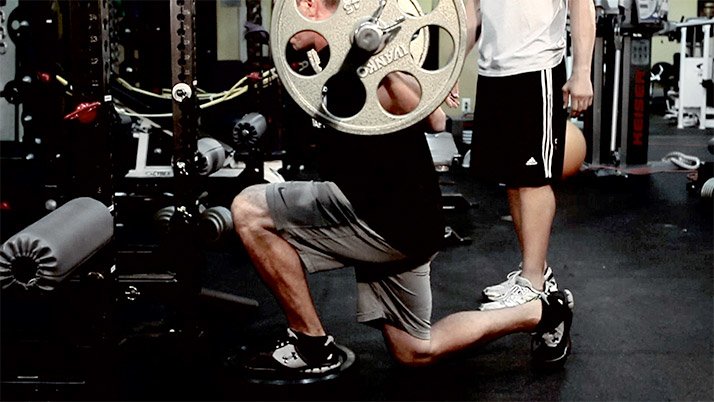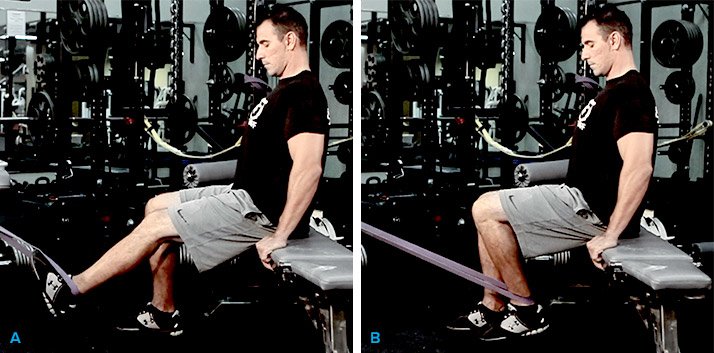
NFL Combine Trainer: Broad Jump For Major Lift
Vertical jump is important, but it doesn't express true power potential in the eyes of NFL scouts. Make them salivate over your broad jump and pure athletic power.
Previous Drill | Overview
Pure athleticism stands out more than anything at the NFL Combine. In many cases, it's the difference between being selected in the first or second half of the draft. Translation: It could make or lose you millions of dollars. Nobody knows how the draft will unfold, so take every measure and answer every question by taking your broad jump off the charts.
The broad jump expresses horizontal power, which is more specific to football motions than vertical power. Vertical power helps you go up for a ball, bat down passes or hurdle defenders; horizontal power helps you cover the full 5300 square yards of the ironed grid. A pure acceleration step expresses horizontal power.
NFL Combine Trainer Broad Jump
Watch the video: 11:19
Two NFL Combine Rules To Remember
- You can't shuffle or move the feet before you jump; they must remain planted.
- You must stick the landing without falling backward or forward.
Four Broad Jump Exercises
Box Broad Jump

Bommarito Performance Systems uses the box broad jump as a pure expression of horizontal power, and to soften the impact of landing. Landings put the lower body through excessive joint load you don't want to consistently repeat. There's no better way to soften the landing than to jump onto a box, rather than letting gravity take you hard into the ground.
There's no quick progression. Shoot for micro progression within what a person is able to do at that particular moment. If they can safely land on the box, that's the proper distance.
Start three feet away from a 30-40-inch-tall box, then micro progress the box higher and the distance farther. Perform it once per week toward the end of the program to soften the joint load and master the technique. The rep range is 1-3 with 4 super sets comprised of heavy or speed squats that will also be your rest period.
How To Execute A Box Broad Jump
- Set the box height at waist line height or a little below and stand back 3-5 feet. It's a broad jump with height up onto the box.
- Feet are hip-width apart and arms start up with the body fully erect (no bend in the knees, hips or ankles). Throw your arms down with the hands clearing the hips.
- At the bottom of the deep knee bend, drive your arms forward and the hips will follow, allowing you to drive up and onto the box.
- Notice: the forward progression of your hips is not only vertical; both horizontal and vertical power are at work.
Landmine Linear Jammer

The Landmine Linear Jammer is a BPS favorite because it's a great way to micro progress through an external load of horizontal power. The Landmine Linear Jammer looks a lot like the jump position used for the Box Broad Jump (erect knees, hips and ankles) before the jump.
The energy transfer created from the hips can be extended into the arms. It's similar to a broad jump when you're trying to hold the arms up and out for as long as possible, even into the descent before the landing. BPS works on jammers twice per week with 4 sets at 3-5 reps. Take 2-3-minute rest periods between sets to allow the nervous system to recover.
The landmine is a sleeve attached to a rack that a barbell can easily fit into, but can also be on a ground plate. A combat handle attached to opposite end of the barbell is an inexpensive, easy way to train linear power. There needs to be room between the plate and the combat handle (BPS uses PVC pipe as a spacer).
How To Execute A Landmine Linear Jammer
- Pick up the combat handle and rest it on your shoulders
- Develop a good lean to get into a linear position
- Back up about 45-60 degrees
- Drop down into a squatting position with your knees as close to the ground as possible
- Explode forward (just like a box broad jump) and the acceleration of your hips will extend the hands out
Elevated Back Lunge

The elevated back lunge is a great single-leg strengthening exercise. There are several single-leg exercises that help you in the broad jump or any other athletic position, but the elevated back lunge is a BPS favorite because:
- From the back of the position you accelerate the hips forward.
- The joint load on the back of the leg is extremely important (the stretch reflex through the ankle joint). Elevate to drop your back knee below the front foot.
It's easy to micro progress the overall load because of the weight on your back. Keep the rep range at 2-6 and perform 4-to-5 sets with 3-to-4-minute rest periods. Perform this twice per week to build maximal strength.
How To Execute An Elevated Back Lunge
- Stand up on a plate with both feet together under the bar and lock your elbows back.
- Once the bar is secure and both feet are on the plate (make sure you're on a plate to drop your knee below the foot) the knee drops below your front foot.
- Step back, fill with air, absorb the blow, lock the ankle, tap the knee and accelerate forward. As you accelerate, make sure the chest doesn't sink and your shoulders don't collapse.
Seated Band Hamstring Curl

The Seated Band Hamstring Curl is simplistic and easy to control. You have to control pure knee flexion without external things like hip flexion and extension getting in the way of what you're trying to accomplish.
Wrap the band around any type of solid post and micro progress by moving the band up or down. Moving the band creates a different type of arm movement, which adds resistance at different angles.
Attach the band to the post at hip level because it's easy to control. Loop the band around your leg. As you come back, the load will vary because you're coming into more band resistance and knee flexion. This exercise can also be done with a machine or a partner. It's all about isometric control of your pelvis. You don't want the pelvis to shift; it takes away from the goal of the exercise: to strengthen the knee flexors.
Perform this exercise twice per week with 4-or-5 sets at 2-6 reps and rest for two minutes between each leg to create time under tension.
How To Execute A Seated Band Hamstring Curl
- Wrap the band around the lower leg, sit up straight on a bench, lock the hands on the bench and be tall in a perfect ergonomic (posture) position.
- Curl the band in with no pelvic tilt and squeeze in a controlled manner before controlling the band back out.
- Lock the ankle with full extension and bring it back in while minimizing knee lift.


